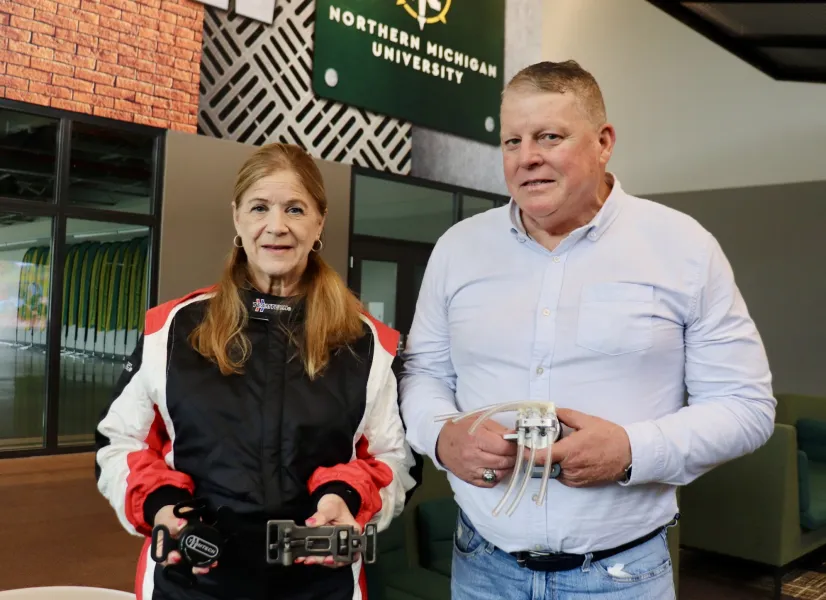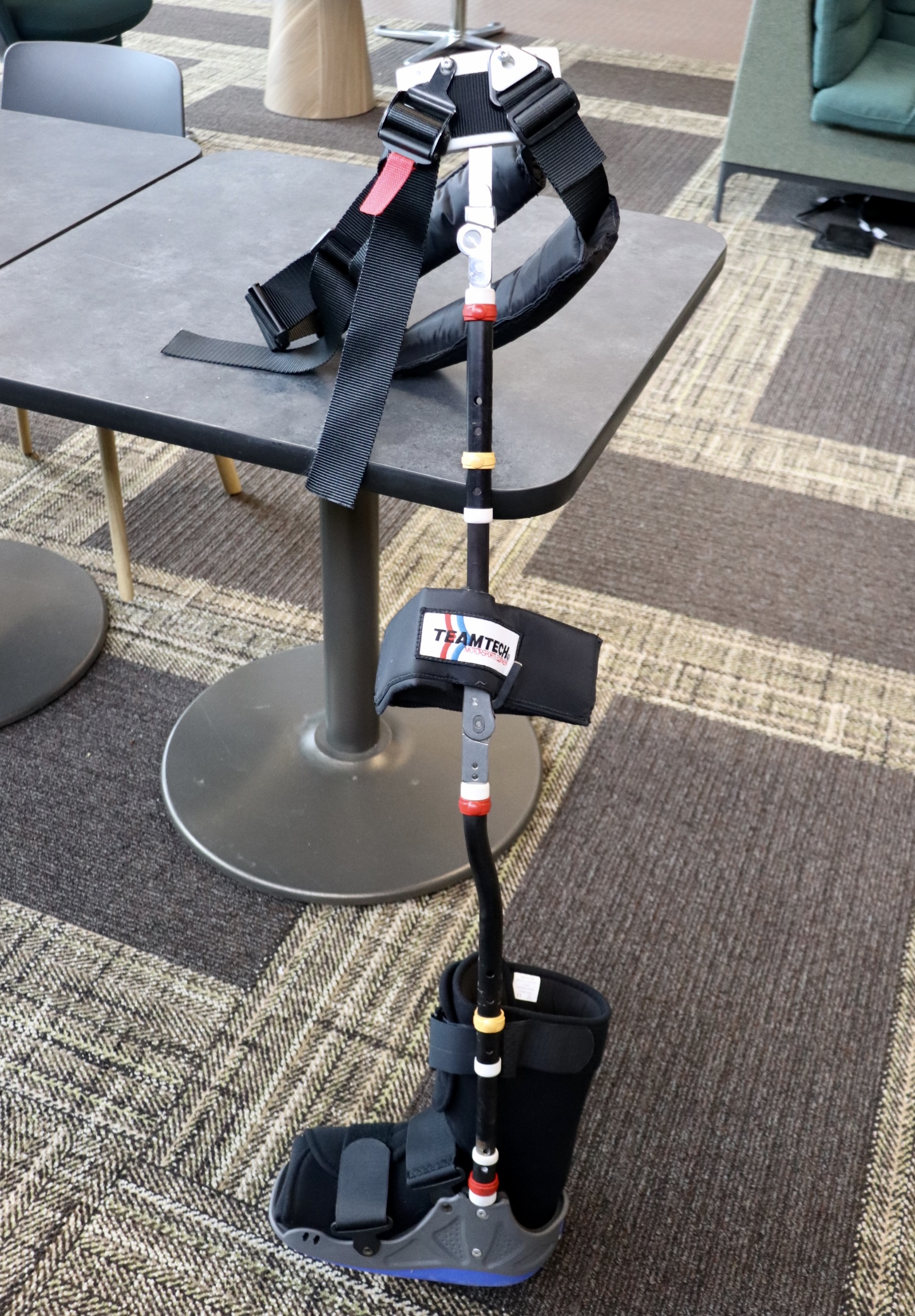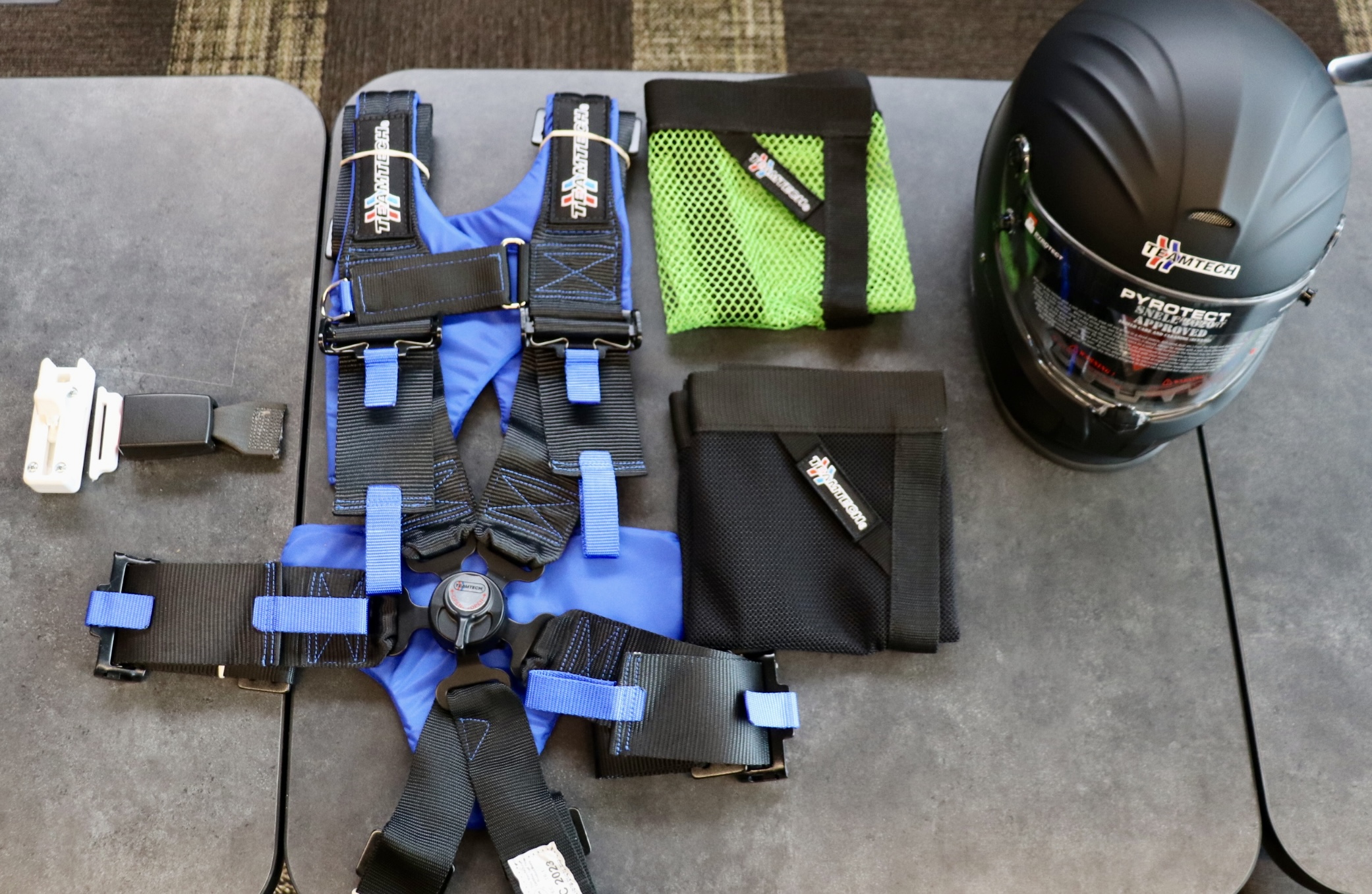A multi-function seat belt buckle intended for space travel, developed by Northern Michigan University alumnus Curt Tucker and co-inventor Jacob Avery, is being reviewed by NASA Johnson Space Center engineers. This is just one of the innovative products Tucker has developed. Applications range from motorsports and military safety to medical mobility devices such as a wheelchair and docking system, next-generation crutches and a state-of-the-art physical therapy and nursing sling.
The multi-function buckle being reviewed by NASA simultaneously releases not only the six harness straps securing the astronauts in their seats, but also their water, air, and radio connections.
“We modified our rotary belt buckle and redesigned the upper portion,” said Tucker, president/owner of TEAMTECH Motorsports Safety Inc. in Saginaw. “You facilitate the system's release with a simple thumb action—astronauts wear big gloves, which makes finger dexterity challenging—and detach all three connectors along with the harness straps.”
As the name of Tucker's company implies, its initial focus when it was established in 1988 was creating products for auto racing and other motorsports. His patents include various seat buckle and driver harness designs, honeycomb mesh car window nets, and a head and neck safety harness. More recently, he was challenged to design a self-tightening seat buckle for NASCAR drivers. It is now in the testing phase.
“The drivers are getting smaller, almost like horse jockeys, because there's a perception that being shorter and lighter is an advantage,” Tucker said. “Their seats are more compact as well, which doesn't leave much room to make the harness adjustable in there, so the straps are actually straight.”
Tucker's self-tightening seat buckle device is positioned over the center of the pelvic region and has two hooks: one to reach over a grab the other half of the lap belt, which pre-tensions the whole system to create “bone-crushing” tightness; and one he calls the load-bearing hook to absorb any impact and prevent it from popping open.
On a related automotive note, Tucker has invented a new seat belt cutter that is attached to the existing buckle link that occupants pull across their torso before clicking it into place. The emergency device is activated by flipping up a lever to activate the cutting mode and effectively slice through the webbing.
“We evaluated across different ages, from children through the elderly, to ensure it would be an acceptable load for them to operate the lever with their fingers,” he said. “This device does not take effort at all. The premise is that, because the shoulder belts are locked when in emergency mode, the cutting device stays right there at the seat buckle and is easily accessible if the vehicle flips over. Other cutting devices fall out of a console or glove compartment, making them impossible to retrieve. Our plan is to market this product to the military first. There were personnel transport vehicles flipping upside down during the Iraq and Afghanistan wars.”
A couple of Tucker's recent innovations were inspired by first-hand experiences. When he required crutches after knee surgery, he found the under-arm models uncomfortable and cumbersome, and knew he could design something better. He worked with an NMU entrepreneurial marketing class taught by Instructor Corinne Bodeman to evaluate the viability of a leg brace that offers quick length adjustments in half-inch increments from the knee to the ankle, adjustable compression on the injured joint to allow the wearer to heal properly, waist/crotch support straps and a boot base. View a related video here.
“The students told me they loved everything about what the brace does,” Tucker said. “The only improvement they suggested was to be able to wear it under clothing. To do that, I had to create a new generation that made the boot removable.”
Tucker has spent the past five years working on a wheelchair docking system. He first had the thought after his great uncle was injured while being transported by bus from a nursing home to a family reunion. A sudden stop sent him flying forward over the front wheels and face first into the back bus seats.
After producing an initial design, Tucker put the project on the back burner until a quadriplegic neighbor reported a similar incident in which his wheelchair fell off a platform on a bus. The neighbor's wife also said she did not tie it down in their personal van anymore because of the hassle crawling around; she simply engaged the wheelchair brakes and drove slowly.
“It is interesting to note that wheelchairs have a sticker saying, ‘not for human transport in motorized vehicles,'” Tucker said. “Yet they put mounting points for ratchet die-downs on all four corners—only to tie the wheelchair down without a passenger in it, but they know full well people are sitting on them while the vehicle's moving.
“I have gone through different versions to improve it each time, enabling one person to activate it in one motion. The latest version is cool. You would have a key fob that activates an electric motor and battery, and you would lift both sides up just by using the key fob. The airlines just put out a memo that they are looking for ideas to securely dock wheelchairs in their planes, so we are under the gun.”
Tucker earned an associate of technology degree in mechanical and architectural drawing and design from NMU in 1982, and a bachelor of science in technology and applied sciences in 2008. He describes NMU's mechanical engineering technology program as world-class and credits his professors with being “knowledgeable, inspiring creativity and drive, fostering personal relationships and making learning both challenging and fun.” Tucker partnered with Professor Tom Meravi—now retired—to start NMU's SAE Baja Racing in 2003 and has supplied the team with TEAMTECH safety gear from his company ever since.
The enduring impact of his time at Northern is evident by the way Tucker has given back to his alma mater, both in service and financial support. He sits on the NMU Foundation Board of Trustees and NMU Mechanical Engineering Technology Advisory Board, and is a former NMU Alumni Association Board member. Tucker is also a past recipient of NMU's Alumni Service Award.
Media Contact: Curt Tucker, curt@teamtechmotorsports.com.



